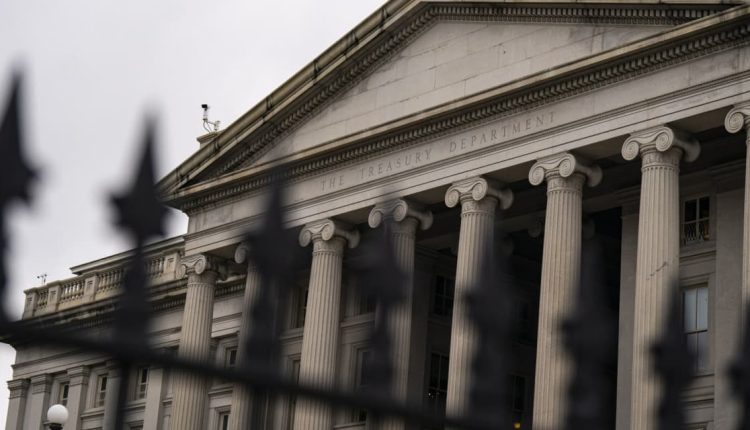An auction of 30-year Treasury debt on Thursday is the latest warning signal that demand for U.S. government bonds is sinking.
At the Treasury auction, primary dealers, who buy up supply not taken by other bidders, had to accept 18.2% of the debt on offer, the most since February of last year. The average this year was 10.72%, according to Dow Jones market data team.
The highest yield accepted in the market for the 30-year Treasury bond on Thursday was 4.837%, nearly four basis points higher than the yield anticipated before the auction.
That gap between anticipated yields and the highest accepted yield is called ‘tail.’ Higher tails at auctions, in plain English, indicate government bond issuers had to entice investors with a premium over the market rate on bonds to place their debt.
“If there are tons of folks looking to buy that yield would be a lot lower,” Chris Gunster, partner and head of fixed-income strategies at Fidelis Capital told Barron’s. “It suggests demand isn’t matching expectations.”
Investors may not consider the 30-year the best predictor of bond market’s demand given its long duration but the Treasury also saw a weak auction recently for the 10-year and three year Treasuries. That suggests there are fewer takers on government debt across various points on the curve.
The messaging on weak demand comes as ‘term premium,’ a theoretical value that reflects the amount of extra yield investors are demanding to hold a 10-year Treasury, a long-term debt, hit a positive value for the first time since June 2021 late last month. It’s the compensation that investors demand for the risks of holding a long-term bond rather than continuing to roll over short-term debt. Those risks include changes in monetary policy or unexpected inflation that could alter the value of a long-term bond.
Taken together, it suggests investors are stepping back their purchases as they stay fearful of the market volatility and the Federal Reserve’s moves.
It also doesn’t help that U.S. is running a high deficit. The federal budget deficit was $1.7 trillion in fiscal year 2023, Congressional Budget Office estimated on Oct. 10. That’s higher than the. $1.38 trillion recorded last year.
The U.S. government has issued $15.73 trillion in Treasuries through September, up from $12.53 trillion in the year-ago period. Higher supplies tend to push prices down and yields up.
“We are behaving very loosely in terms of spending,” says Peter Tchir, the head of macro strategy at Academy Securities. That creates “just a lack of faith in Washington, D.C. having any discipline, and that is going to make creditors less likely to lend you or demand more of a premium to lend to you.”
The markets reacted to the weak auction with the stocks falling Thursday to end a four-day winning streak and the 10-year Treasury yield rising 4.7% while the 30-year was at 4.8%.
Write to Karishma Vanjani at [email protected].
Read the full article here

